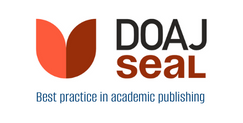Article | Open Access
How Much of a New Agenda? International Structures, Agency, and Transatlantic Order
| Views: | 1724 | | | Downloads: | 1542 |
Abstract: This article focuses on the links between transatlantic relations—a structured array of markets, hierarchies, networks, ideas, and institutions—and broader elements of international structure and world order. It argues that the changing state of transatlantic relations reflects changes in the structure of the relations themselves, but also structural change in the global and domestic arenas and how such change shapes or reflects the actions of a wide variety of agents. The first part of the article briefly explores the importance of international structure in order to identify the global forces that shape the context for transatlantic relations. The article then examines the key mechanisms in transatlantic relations which interact to create forms of transatlantic order; these create spaces for a wide variety of agents, operating within broader elements of international and domestic structure, and the article illustrates this through the ways in which the EU’s “new agenda for EU–US relations” sought to shape transatlantic interactions during the first year of the Biden presidency. The article examines the implications of transatlantic responses to the Russian attack on Ukraine in February 2022, and concludes that despite the move to enhanced EU–US cooperation in the short term, the interaction of structures, mechanisms, and actors will contribute to continuing differentiation of transatlantic relations, at least in the medium term, whatever the preferences of US and EU policy-makers.
Keywords: European Union; international structure; transatlantic relations; United States
Published:
© Michael Smith. This is an open access article distributed under the terms of the Creative Commons Attribution 4.0 license (http://creativecommons.org/licenses/by/4.0), which permits any use, distribution, and reproduction of the work without further permission provided the original author(s) and source are credited.




